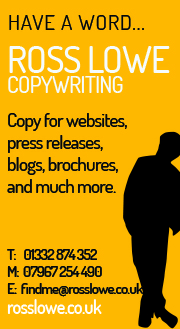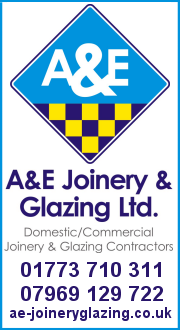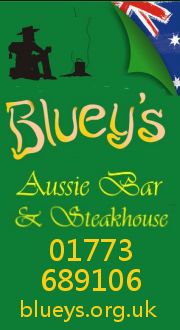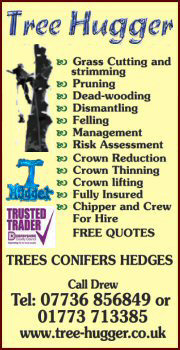The rise and fall of one of Nottingham's great employers - Thomas Forman
Article Published On 7/7/2014 5:04:00 AM
Published By Nottingham Post | View The Full News Article
THE imposing, white stone edifice that housed the printing headquarters of Thomas Forman still dominates the stretch of Hucknall Road before it makes its final descent towards Nottingham.It was there, for more than 150 years, that millions of labels, cartons, calendars, stationery and security items were printed.Each Thomas Forman division had its own sales force and at the height of the company's success, there were area sales offices in London, Liverpool and Birmingham.The company also had its own design studio, composing, reproduction, finishing, laboratory, engineering and personnel departments.But after 152 years, the business was closed.Today the facade of the building in Hucknall Road, designed by celebrated Nottingham architect Cecil Howitt, remains.However, it is now occupied by a Tesco Express, private apartments and the Indian Community Centre Association, known as the ICCA.The factory at the rear was demolished to make way for housing built by Persimmon Homes.Thomas Forman, the founder, was born in Louth, Lincolnshire, where he was apprenticed in January, 1832, as a compositor.His first business venture was as a bookseller and stationer in Bedford. He came to Nottingham in 1848 and was able to acquire a printing works at 14, Long Row, from a printer named Oliver.Newspaper and book production were the major part of the business in addition to jobbing printing.In 1861, the first issue of the Daily Guardian appeared, followed in 1878 by the Evening Post. In 1872, Thomas Forman had taken into partnership the two elder of his four sons, John and Arthur, and the title Thomas Forman and Sons had been assumed – later his other two sons, Jesse Robert and James Forman were included in the partnership.By 1870 the original premises in Long Row had become quite inadequate and a move took place to South Sherwood Street, with a frontage to what is now Forman Street.Due to the expanding business, South Sherwood Street could not cope with the newspaper production and general printing and in 1919 it was agreed to dissolve the partnership and take the printing to purpose-built new premises in Hucknall Road.In 1926 the print business moved into its new home, designed by Cecil Howitt, whose next big project would be to design the new Council House.The business was headed by James Forman and his son Dudley Perry Forman.Mr Dudley died tragically in a riding accident at the age of 43.In 1926, G W Knightall and H E Barrow became partners in the firm.Following the death of James Forman in 1931, the business remained in the ownership of the family with Col W A Potter as its chairman.He was succeeded by his son Tom F Potter. The company celebrated its centenary in 1948. In 1960 the business was sold to Mardon Son and Hall, jointly owned by the Imperial Tobacco Group and the British American Tobacco Company. In 1980 British American Tobacco Company became the sole owners. In 1984 they sold it on to Robert Maxwell's British Printing and Communications Corporation.The business was sold again in 1989 to a London group of managers, and finally closed in 2000.
DURING the early part of the 20th Century, there was no finer name in the world of printing than Thomas Forman of Nottingham.A quick look through the order book for labels, leaflets, brochures, showcards and posters confirms the company's standing.Customers included the Cunard Steamship Company. Prestigious brochures were produced for the Queen Mary, Queen Elizabeth and other ships in the Cunard fleet, together with menu cards and programmes.Catalogue sections were printed for mail order companies such as Littlewoods and Formans also printed Gunn & Moore catalogues and Players Navy Cuttings. In addition they printed 16 sheet posters for bill boards.Labels were produced for many major companies. In the latter years the company concentrated on label production and a separate label division was created.Showcard material was produced for the tobacco industry for John Player and Ogdens, book covers for Pan Books, fine art prints for Frost & Reed and stocking celloliners for Bear Brand.In the early years Formans printed Cook's Timetables on a regular basis, race cards, and part of the Electors Register for Nottingham City Council.The Horticultural Advertiser, a weekly publication, was printed by Formans for 76 years until publication ceased in 1960.In the late 1960s an association was set up with Floraprint in Calverton who specialized in the publication of horticultural literature.This was the start of high quality printing for the horticultural trade when Formans later produced rose catalogues for several famous growers including Bees, Wheatcrofts, Alex Cocker and others.The Carton Division was expanding rapidly at the end of the 1950s and by 1961 had doubled its output. This division concentrated on the production of cigarette packet slides for Players, chocolate box cartons for Rowntrees, such as Black Magic, and general carton work for many national companies.Later during the period it specialised in the production of cartons for the pharmaceutical industry as well as cosmetic cartons. Cosmetic gift pack cartons were produced for companies such as Lentheric Morny, Innoxa, Yardleys, Ponds, Revlon and others.In 1975 Formans enjoyed the growth of the toys and games industry by producing intricate designs for companies such as Denys Fisher and Meccano. Did you work at Thomas Forman? Let us know in the comments below!











